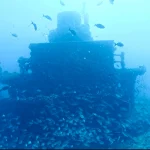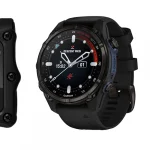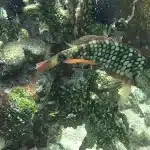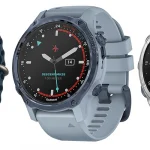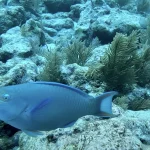Table of Contents
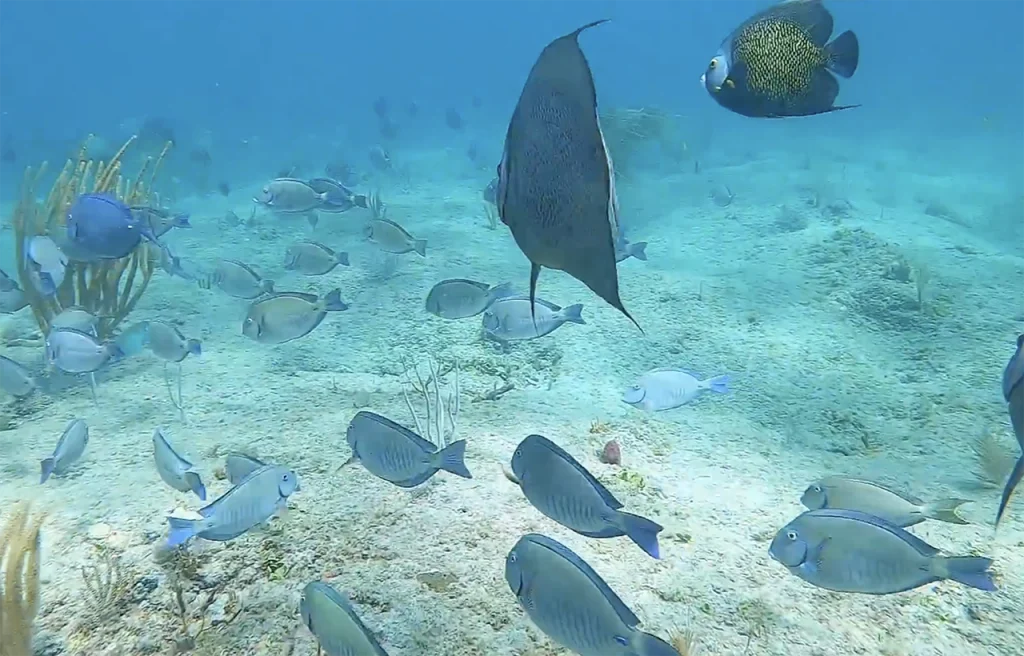
Suzanne’s Ledge, located off the coast of Pompano Beach, Florida, is a popular snorkeling and diving site renowned for its vibrant marine life and accessible underwater features.
Article at a Glance
- Depth: The dive site features depths ranging from 15 to 30 feet, making it accessible for both beginners and advanced divers.
- Location: Suzanne’s Ledge is situated off the coast of Pompano Beach, Florida, approximately half a mile from shore.
- Visibility: Typical visibility ranges from 10 to 30 feet, with the best conditions often found during the winter months.
- Marine Life: Divers can expect to see a rich variety of marine life, including tropical fish, tarpon, lobsters, moray eels, and vibrant coral formations.
- Ideal Diving Conditions: High tide and calm weather are recommended for optimal diving experiences, with early morning dives being particularly favorable.
- Guided Tours: Local dive shops offer guided tours tailored for both novice and experienced divers, enhancing safety and enjoyment.
- Conservation Efforts: Initiatives like Project Baseline involve divers in monitoring the health of the reef ecosystem, promoting environmental awareness and protection.
Suzzane’s Ledge Pompano Beach
Overview of Suzanne’s Ledge
- Location: Suzanne’s Ledge is situated approximately half a mile from shore and about three-quarters of a mile north of the Pompano Beach Pier. It is part of a larger reef system that includes the Pompano Drop Off.
- Depth: The ledge ranges from 10 to 30 feet in depth, making it suitable for both novice and experienced divers. The average depth is around 15 to 20 feet.
Snorkeling
- Accessibility: Visitors can reach Suzanne’s Ledge within about 15 minutes by boat or swimming from the beach. This makes it an ideal spot for families and casual snorkelers.
- Guided Tours: Local dive shops, such as South Florida Diving Headquarters, offer guided snorkeling tours that provide equipment and expert guidance for those unfamiliar with the area.
Scuba Diving
- Diving Experience: For those interested in scuba diving, Suzanne’s Ledge presents an exciting opportunity to explore deeper sections of the reef. The ledge has various nooks and crannies that are perfect for spotting marine life.
- Drift Diving: The warm Gulfstream current allows for drift diving experiences where divers can float along the reef while being picked up downstream by a boat.
What Marine Life Can I Expect To See?
- Tropical Fish: The area is teeming with various species of tropical fish, including parrotfish, sergeant majors, and angelfish. These colorful fish are commonly spotted among the coral formations and rocky structures.
- Juvenile Species: Many juvenile fish inhabit the ledge, providing an exciting opportunity to observe young marine life in their natural habitat.
- Tarpon: Occasionally, you might see schools of tarpon, which are known for their acrobatic jumps and silvery scales. These fish can be quite large and are a thrilling sight for divers.
- Lobsters: The nooks and crannies of the ledge serve as hiding spots for lobsters, making them a common sight for those exploring the reef.
- Moray Eels: You may also catch a glimpse of an occasional moray eel, often peeking out from their rocky homes.
- Staghorn Coral: The ledge features clusters of staghorn coral, which are important for the reef ecosystem and provide habitat for various marine organisms.
- Invertebrates: The reef is home to numerous invertebrates, including sea stars and various shellfish, which contribute to the biodiversity of the area.
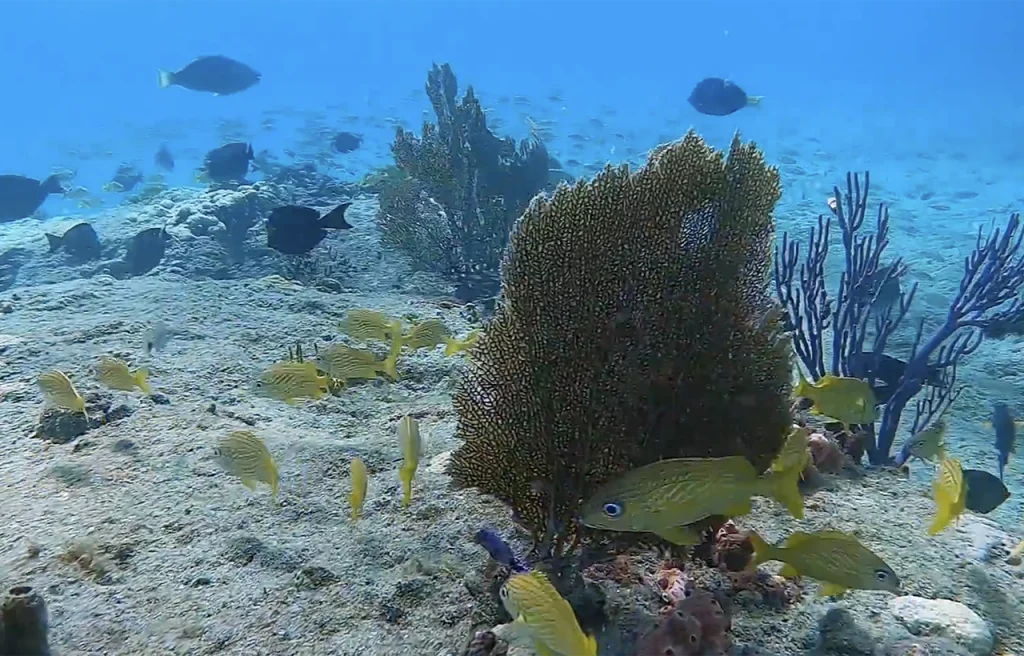
What Do Divers Say About This Site?
General Impressions
- Biodiversity: Many divers appreciate the rich marine life at Suzanne’s Ledge. They report seeing a variety of tropical fish, including juvenile species, tarpon, and lobsters hiding in the ledge’s crevices13. The presence of vibrant coral formations, particularly staghorn coral, is also frequently mentioned as a highlight.
- Visibility and Conditions: Divers often comment on the good visibility, which can enhance the overall experience. The site typically has mild currents, making it accessible for divers of various skill levels.
Specific Feedback
- Ease of Access: Divers find Suzanne’s Ledge easy to reach, either by boat or by swimming from the beach. This accessibility makes it a popular choice for both novice and experienced divers looking for a quick dive.
- Exploration Opportunities: The ledge features numerous nooks and crannies that are perfect for exploration. Divers enjoy venturing along the ledge to discover hidden marine life and unique underwater landscapes.
- Environmental Concerns: Some divers express concerns about the health of the reef due to ongoing dredging and beach projects that could impact coral health. This awareness adds an element of responsibility among divers regarding environmental conservation efforts.
Key Information
| Category | Details |
|---|---|
| Location | Off the coast of Pompano Beach, Florida |
| Depth Range | 15 to 30 feet (average around 20 feet) |
| Visibility | Typically 10 to 30 feet, best during winter months |
| Marine Life | Tropical fish, tarpon, lobsters, moray eels, staghorn coral |
| Accessibility | Approximately half a mile from shore; accessible by boat or swimming |
| Ideal Conditions | High tide, calm seas, and clear weather |
| Best Time to Dive | Winter months (December to February), early morning dives recommended |
| Skill Level Suitability | Suitable for beginners and advanced divers |
| Guided Tours | Available through local dive shops |
| Environmental Initiatives | Project Baseline for monitoring reef health |
| Photography Opportunities | Excellent for both wide-angle and macro photography |
Highlights of Diving This Site?
- Rich Marine Biodiversity: Divers frequently encounter a variety of marine life, including juvenile fish, schooling baitfish, and the occasional tarpon. The presence of colorful tropical fish adds vibrancy to the underwater experience.
- Unique Underwater Features: The ledge is characterized by numerous nooks and crannies, which provide excellent hiding spots for marine creatures such as lobstersand moray eels. These features make for an engaging exploration as divers navigate through the rocky terrain.
- Coral Formations: Divers often highlight the clusters of staghorn coral found towards the west of the ledge. These coral formations contribute to the overall beauty of the site and support diverse marine life.
- Accessibility: The site is easily accessible, located just half a mile from shore, making it suitable for both boat dives and shore entries. This convenience allows for quick access to the underwater environment.
- Good Visibility: Many divers report favorable visibility conditions, which enhance the overall diving experience by allowing for clear views of the underwater landscape and marine life.
- Environmental Monitoring: As part of ongoing conservation efforts, Suzanne’s Ledge is monitored by initiatives like Project Baseline, which aims to study and protect this vital reef ecosystem. Divers often appreciate being part of a community that contributes to environmental awareness and preservation.
- Shelling Opportunities: After winter storms, divers have noted good shelling opportunities on the sand flats inside the reef ledge, adding another layer of enjoyment to their dives.
My Favorite Dive Computers
I have compared the 3 top diving computers for each category to help making the right choice easier:
Iconic Spots At This Site
- The Main Ledge: This is the primary feature of Suzanne’s Ledge, which runs parallel to the shore and faces east. It is part of a larger reef system that includes the Pompano Drop Off. Divers often start their exploration here, where they can see a variety of marine life and coral formations.
- Staghorn Coral Clusters: Located towards the western side of the ledge, these clusters of staghorn coral are a significant attraction. They provide habitat for numerous fish species and contribute to the overall biodiversity of the reef.
- Nooks and Crannies: The ledge is characterized by various small crevices and hiding spots, making it ideal for spotting lobsters and moray eels. These features add an element of adventure as divers explore the intricate underwater landscape.
- Shelling Areas: After winter storms, divers have noted excellent shelling opportunities on the sand flats inside the reef ledge. This aspect provides a unique experience for those interested in collecting shells while enjoying their dive.
- Schooling Fish: The ledge is known for its vibrant schools of baitfish, which attract larger species like tarpon. Divers often enjoy watching these dynamic schools as they move through the water, adding excitement to their dives.
Environmental Conservation Efforts at Suzanne’s Ledge
Key Conservation Efforts
- Project Baseline: Suzanne’s Ledge is included in the Project Baseline initiative, which aims to monitor and document changes in underwater environments. This program encourages citizen divers to collect data on marine life and environmental conditions, contributing to a broader understanding of reef health over time24. Participants can share dive reports, images, and videos to assist in ongoing research.
- Mooring Buoys: In 2008, mooring buoys were installed at Suzanne’s Ledge to reduce anchor damage to the coral reefs. These buoys provide a designated area for boats to moor, minimizing the impact on sensitive coral habitats.
- Monitoring Programs: Ongoing monitoring of the reef’s health is vital due to environmental threats such as dredging and beach projects. These activities can lead to sedimentation that covers corals and disrupts marine habitats. Project Baseline actively tracks these changes to inform conservation strategies.
Challenges
- Dredging and Coastal Development: Ongoing dredging and beach nourishment projects pose significant risks to the reefs surrounding Suzanne’s Ledge. The introduction of coarse sand can smother corals, leading to declines in reef health and biodiversity. This situation highlights the need for careful management of coastal development activities.
- Public Awareness and Engagement: Increasing public awareness about the importance of coral reefs and their ecosystems is essential. Engaging local divers and snorkelers in conservation efforts helps foster a sense of stewardship for these underwater environments.
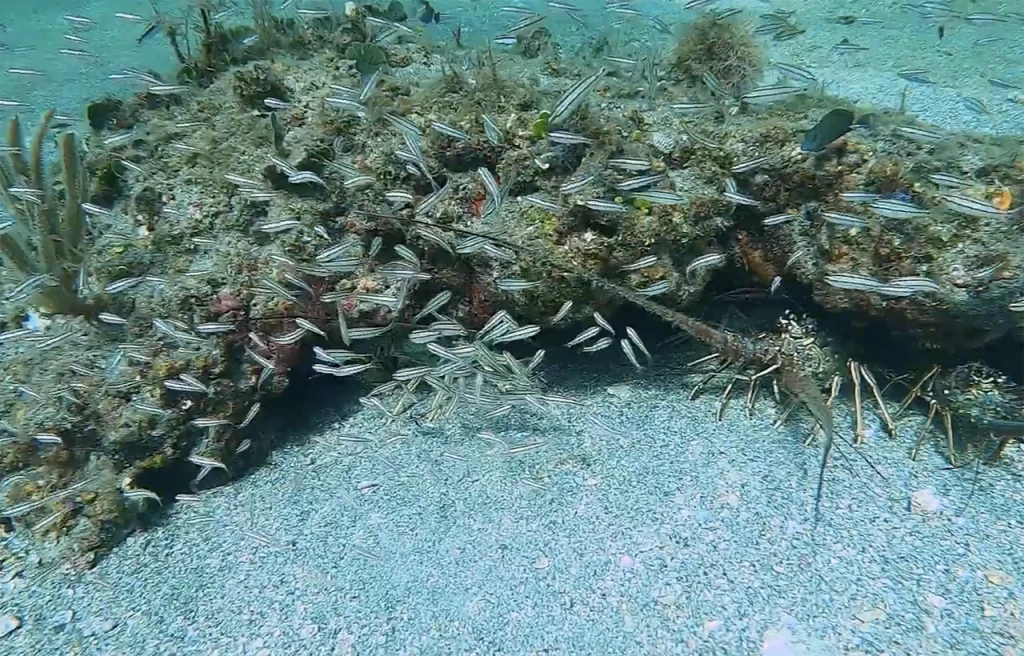
Maximizing Your Diving Experience at Suzanne’s Ledge
Preparation and Planning
- Choose the Right Time: Early morning dives are recommended for better visibility and to avoid crowds. High tide often provides clearer water conditions, making it easier to spot marine life.
- Check Conditions: Before diving, check the weather and current conditions. Suzanne’s Ledge typically has mild currents, but it’s always best to confirm local conditions with dive operators.
- Dive with a Buddy: Always dive with a partner for safety. Having a buddy ensures that help is available in case of emergencies and enhances the overall experience through shared discovery.
Navigating Suzanne’s Ledge
- Start at Mooring Balls: Use the permanent mooring balls as starting points for your dive. Depending on the current, you can begin at either the north or south ball and follow the eastern ledge to explore its features.
- Explore Key Features: Venture westward to discover clusters of staghorn coral, which attract various fish species. Look for nooks and crannies where lobsters and moray eels may be hiding.
- Shelling Opportunities: After winter storms, explore the sand flats inside the reef ledge for shelling opportunities. This adds an enjoyable element to your dive as you search for unique shells.
Marine Life Interaction
- Observe, Don’t Touch: While encountering marine life is exciting, it’s important to observe without touching. Avoid disturbing corals, as they are delicate ecosystems that can be easily damaged.
- Be Mindful of Your Surroundings: Keep an eye out for schooling baitfish and larger species like tarpon. These dynamic interactions can provide memorable moments during your dive.
Environmental Awareness
- Participate in Conservation Efforts: Engage with initiatives like Project Baseline by sharing your dive reports and photos. This contributes to ongoing monitoring of the reef’s health and raises awareness about environmental conservation.
- Respect Marine Life: Follow guidelines for responsible diving, such as not feeding fish or disturbing their habitats. This helps preserve the natural behaviors of marine species.
Capturing Memories at Suzanne’s Ledge: Photography Tips
Choose the Right Equipment
- Underwater Camera: Invest in a good underwater camera or housing for your DSLR or mirrorless camera. Compact cameras with underwater capabilities can also yield excellent results.
- Lenses: A wide-angle lens is ideal for capturing expansive scenes and schools of fish. If you have a macro lens, it can be useful for close-ups of small creatures like nudibranchs and coral details.
Optimize Your Settings
- Manual Mode: Use manual settings to control exposure, shutter speed, and aperture. A faster shutter speed (1/125s or faster) helps freeze motion, especially with active marine life.
- ISO Settings: Increase your ISO in low-light conditions but be cautious of noise. Start with ISO 200-400 and adjust based on visibility and light conditions.
Lighting Techniques
- Natural Light: Utilize natural light, especially during midday when sunlight penetrates the water more effectively. This helps enhance colors and visibility.
- Strobe Lights: If you’re using strobes, position them to minimize backscatter and illuminate your subject without washing out colors.
Composition Techniques
- Rule of Thirds: Frame your shots using the rule of thirds to create balanced compositions. Place key subjects off-center for more dynamic images.
- Foreground Interest: Include elements in the foreground to add depth to your photos, such as coral formations or swimming fish.
Focus on Marine Life
- Patience and Observation: Take your time to observe marine life behavior. Many species are curious and may approach you if you remain still.
- Avoid Disturbance: Be mindful not to touch or disturb the marine environment. This not only protects the ecosystem but also allows for more natural behavior from wildlife.
Post-Dive Editing
- Editing Software: Use photo editing software like Adobe Lightroom or Photoshop to enhance colors, adjust exposure, and crop images for better composition.
- Color Correction: Underwater photos often need color correction due to water absorption of certain wavelengths of light. Adjusting the white balance can dramatically improve your images.
Practice Safety
- Buddy System: Always dive with a buddy and communicate your photography plans beforehand.
- Equipment Check: Ensure all equipment is functioning correctly before entering the water to avoid any disruptions during your dive.
Frequently Asked Questions
When is the best time to dive Suzanne’s Ledge?
Optimal Diving Conditions
Tide Considerations: Diving is generally best during high tide. At high tide, access to the site is easier, as low tide can expose slippery rocks and make entry more challenging. High tide also tends to provide better visibility and reduces the risk of encountering strong currents.
Seasonal Timing: The winter months (December to February) are often recommended for diving in South Florida, including Suzanne’s Ledge. During this period, the weather is typically drier and calmer, leading to clearer waters and more stable conditions for diving.
Visibility and Weather: Aim for days with clear skies and minimal wind. Good visibility is crucial for enjoying the rich marine life that Suzanne’s Ledge has to offer. Winter conditions usually result in less rain and fewer storms, contributing to better underwater visibility.
Additional Tips
Check Local Conditions: Always check local tide charts and weather forecasts before your dive. Websites and apps that provide real-time updates on tides and currents can be invaluable for planning.
Dive Early: Morning dives are often preferred as they typically have calmer waters and less boat traffic, enhancing the overall experience.
What is the visibility like while diving Suzanne’s Ledge?
Visibility while diving at Suzanne’s Ledge can vary, but it is generally considered to be good, especially during optimal conditions.
Typical Visibility Range: Divers can expect visibility to range from 10 to 30 feetunder normal conditions. However, this can fluctuate based on factors such as weather, tides, and water clarity.
Best Conditions: Visibility tends to be best during the winter months (December to February) when water conditions are calmer and clearer. High tide also contributes to improved visibility, making it an ideal time for diving.
Impact of Weather: Heavy rains or storms can temporarily reduce visibility due to increased sediment and debris in the water. It’s advisable to check local conditions before diving.
Comparison with Other Sites: Suzanne’s Ledge is part of a larger reef system that includes the Pompano Drop Off, which is known for its vibrant marine life and good visibility. This makes it a popular choice among divers looking for a rewarding underwater experience.
Is Suzanne’s Ledge suitable for beginners?
Yes, Suzanne’s Ledge is suitable for beginners.
Depth Range: The ledge typically drops between 15 and 30 feet, making it manageable for beginner divers who may not yet be comfortable at deeper depths. This shallow range allows for easier monitoring of buoyancy and comfort underwater.
Calm Conditions: Pompano Beach, including Suzanne’s Ledge, generally has calmer seas compared to many other dive locations, which is beneficial for beginners. The warm Gulfstream current flows parallel to the shoreline, creating ideal conditions for drift diving, which can be less stressful for those new to diving.
Rich Marine Life: The vibrant marine ecosystem at Suzanne’s Ledge offers plenty of opportunities for beginners to observe diverse marine life, including tropical fish, lobsters, and coral formations. This abundance of life makes dives more engaging and enjoyable.
Guided Tours Available: Many local dive shops offer guided tours specifically designed for beginners. These tours provide instruction and support, helping novice divers gain confidence while exploring the underwater environment safely.
Snorkeling Opportunities: For those who may not yet be certified or prefer not to dive, snorkeling at Suzanne’s Ledge is also an excellent option. The site is accessible from the surface, allowing snorkelers to enjoy the marine life without needing scuba gear.
Is Suzanne’s Ledge suitable for advanced divers?
Yes, Suzanne’s Ledge is suitable for advanced divers, although it primarily caters to a wide range of skill levels, including beginners.
Features for Advanced Divers
Depth Range: The ledge has a depth range of 15 to 30 feet, which is manageable for advanced divers who may prefer deeper dives elsewhere. However, the shallow depths allow for longer bottom times and exploration of the reef.
Diverse Marine Life: Advanced divers can enjoy the opportunity to observe a variety of marine species, including larger fish like tarpon and various schooling fish. The presence of lobsters and moray eels hiding in crevices adds to the excitement of exploration.
Exploration Opportunities: The ledge features numerous nooks and crannies, providing advanced divers with the chance to explore more complex underwater structures. This can lead to unique encounters with marine life and interesting photographic opportunities.
Drift Diving: The site allows for drift diving experiences, which can be appealing to advanced divers looking for a more dynamic diving experience. The mild currents typical of the area make it an enjoyable option.
Environmental Monitoring: Advanced divers interested in conservation can participate in initiatives like Project Baseline, which involves monitoring and documenting changes in the reef environment. This engagement can add depth to the diving experience.
Pompano Beach Dive Sites
- Pompano Trench
- Lost Ledge
- Suzzane’s Ledge
- Pompano 3rd Reef Ridge
- Steve’s Twin Ledges
- Shark Reef
- Touchdown Reef
- Pompano Drop Off
- Grouper Bend
- Nursery
- Crab Cove
- Sea Ranch
- Hillsboro Ledge
- Lighthouse Ledge
- Mark’s Ledge
- Moray Bend
- Nolan’s Ledge
- Separated Rocks (Deerfield)
- The Horseshoe
- Abbey Too
- San Remo
- Shark Ledge
- Spotfin Reef

